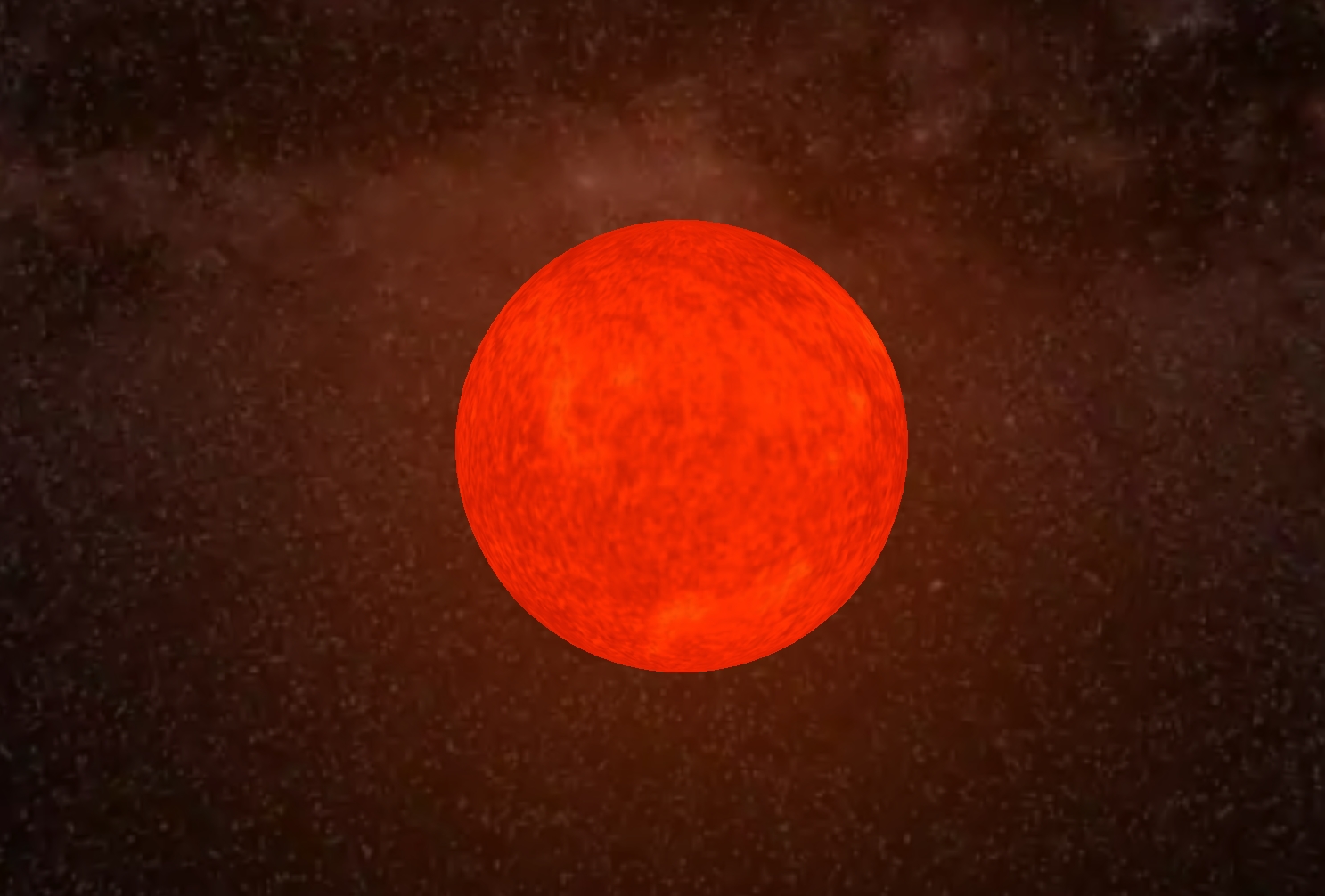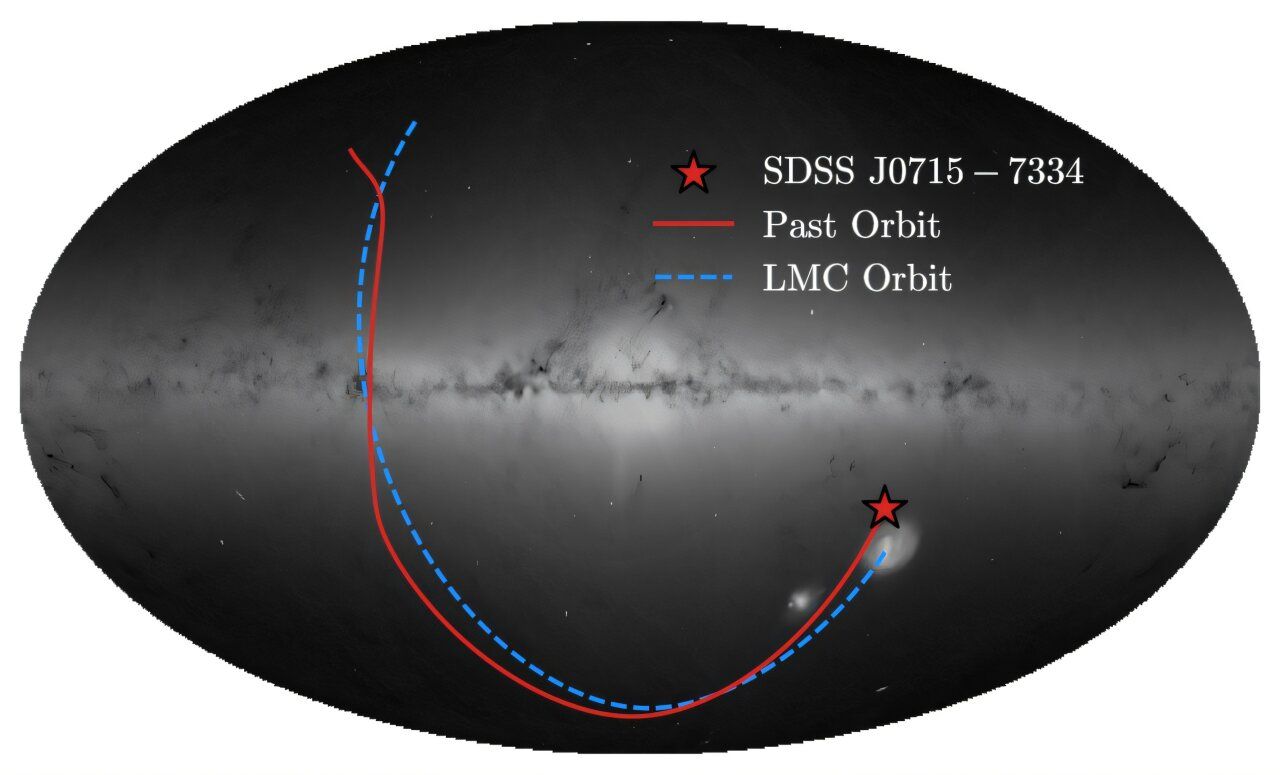Follow us on Google News (click on ☆)
The first stars born after the Big Bang were composed almost exclusively of hydrogen and helium, with minute traces of lithium. These primordial giants, at the end of their lives, released into space the first heavier elements created by nuclear fusion in their cores. This material then served as raw material for subsequent stellar generations, each gradually enriching the interstellar medium.
Today, most stars contain a mixture of elements, but some, extremely rare, still preserve the chemical composition of the origins.

A team led by Alexander Ji from the University of Chicago has identified what may be the most primitive star ever discovered. Named SDSS J0715-7334, this red giant exhibits an extraordinarily low metal content, meaning elements heavier than helium. Its total metallicity, designated by the letter Z, is less than 7.8 × 10⁻⁷, which is about half that of the previous record held by star J1029+1729. This value is also more than ten times lower than that of the most iron-poor star known until now.
What makes this discovery particularly remarkable is the notable absence of carbon in its composition. Unlike other very metal-poor stars that usually retain significant amounts of carbon, SDSS J0715-7334 shows an exceptionally stripped chemical profile. Researchers believe this configuration matches the signature of a Population III star, those first stars in the Universe that never incorporated heavy elements.
Kinematic analysis performed using data from the Gaia satellite allowed the tracing of this star's turbulent history. Researchers determined that it originally came from the Large Magellanic Cloud, a dwarf satellite galaxy of the Milky Way, before being captured by our galaxy. Its distant orbit in the galactic halo preserved its surface from any contamination by the interstellar medium, offering astronomers a particularly pure sample for their studies.

Reconstructed orbital trajectory of the primitive star (SDSS J0715-7334) in the galactic halo with that of the Large Magellanic Cloud (LMC).
Credit: Gaia Mission/ESA
This discovery also sheds light on the cooling mechanisms of primordial gas clouds. SDSS J0715-7334 represents only the second star identified below the fine-structure cooling threshold, a phenomenon where heavy elements facilitate the cooling of gaseous clouds. The work suggests that cooling by cosmic dust is necessary to allow the formation of stars with such low metallicity, a process that could occur in other galaxies beyond our own.
Population III Stars
Population III stars represent the first generation of stars formed after the Big Bang. They formed exclusively from primordial elements: hydrogen, helium, and traces of lithium. These cosmic giants, much more massive than current stars, played a fundamental role in the chemical enrichment of the Universe.
Their short lifespan, on the order of only a few million years, ended with cataclysmic explosions as supernovae. These violent events scattered into space the first heavy elements synthesized in their cores, such as carbon, oxygen, and iron. This newly formed material then served as the basis for subsequent stellar generations.
The direct detection of Population III stars remains a major goal of modern astronomy. Their study would allow understanding of the physical conditions prevailing in the young Universe and the mechanisms of formation of the first cosmic structures. Extremely metal-poor stars like SDSS J0715-7334 offer valuable clues about these vanished stellar ancestors.
Theoretical models predict that these primordial stars could reach considerable masses, up to several hundred times that of the Sun. Their intense radiation likely contributed to the reionization of the Universe, a crucial process in cosmic history that transformed neutral gas into ionized plasma.
Stellar Metallicity
A star's metallicity measures its content of elements heavier than helium, commonly called metals in astronomy. This quantity, often denoted by Z, represents the fraction of stellar mass made up of these elements. It serves as a valuable indicator for dating stars and tracing the chemical history of our galaxy.
Astronomers determine metallicity by analyzing the light spectrum of stars. Each chemical element absorbs or emits light at specific wavelengths, creating a unique spectral signature. By measuring the intensity of these spectral lines, researchers can precisely quantify the abundance of different elements present in the stellar atmosphere.
Our Sun, with a metallicity of about 0.02, represents a relatively young and enriched population star. In comparison, the oldest stars in the Milky Way exhibit metallicities that can drop to 10⁻⁶, or one millionth that of the Sun. These extremely low values testify to their formation in a Universe still poor in heavy elements.
The study of very low-metallicity stars allows reconstruction of the galaxy's chemical evolution. Each stellar generation enriches the interstellar medium, creating a chronological progression visible in the chemical composition of stars. This approach, similar to the study of geological layers, offers a unique window into cosmic history.